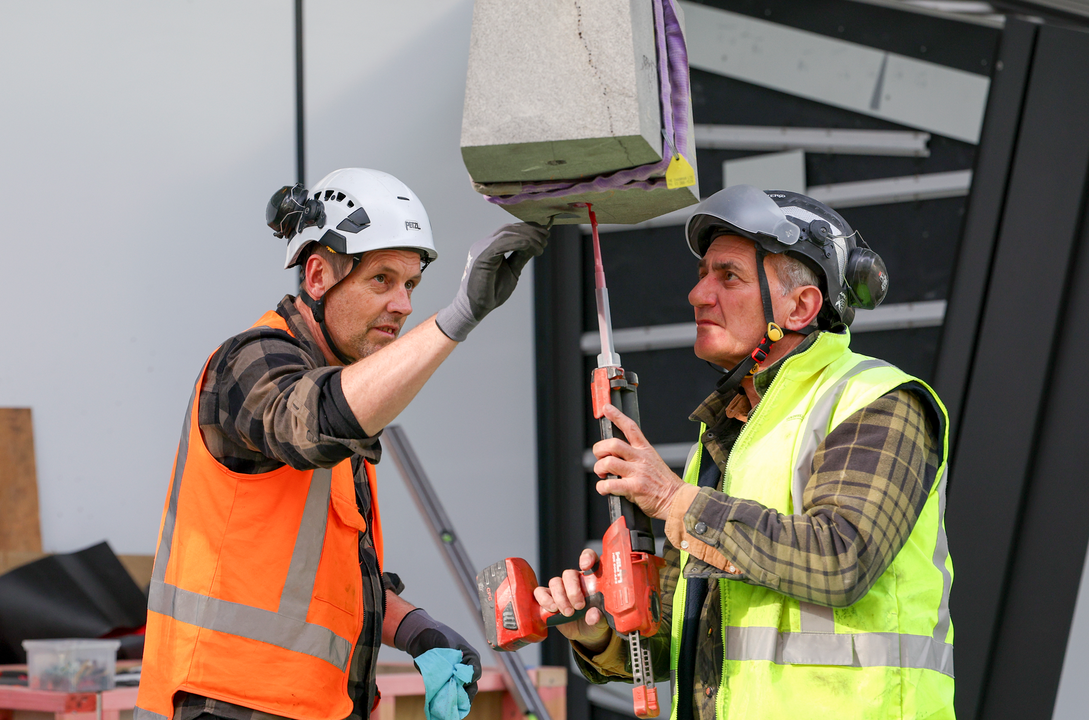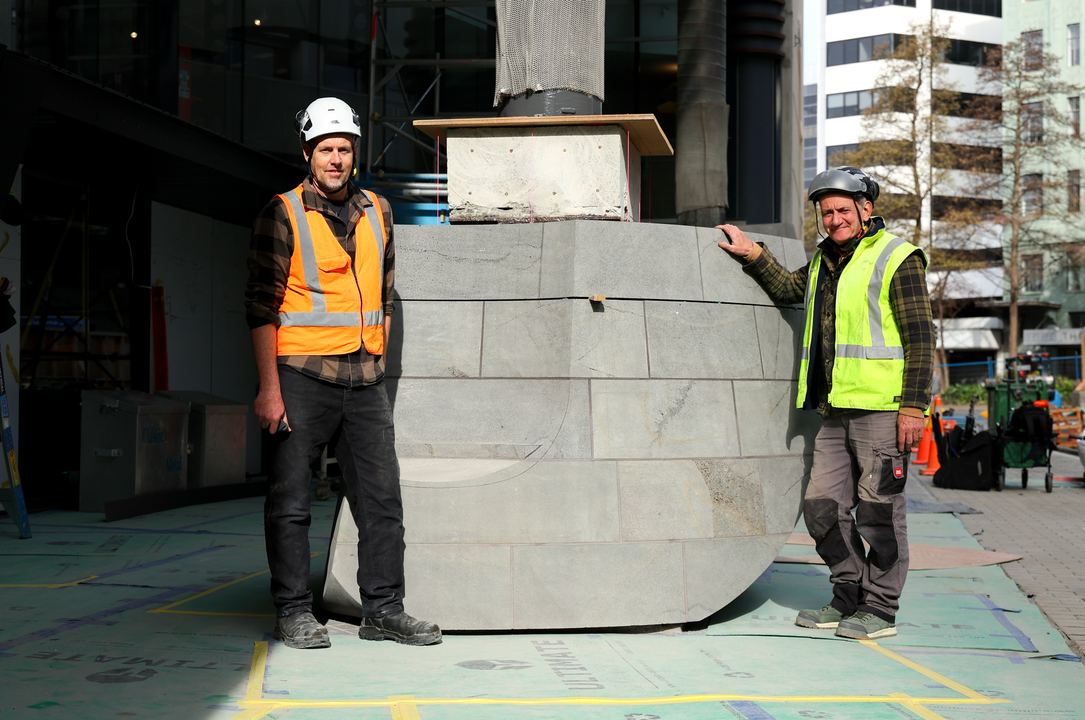Carving their own niche in New Zealand’s history
4 minute readBanker masons Regan Shanks and Mark Whyte are part of a rare group keeping a centuries-old trade alive in modern Aotearoa. This winter, the pair are working on one of the country’s most culturally and architecturally significant projects: the restoration of Wellington Central Library, Te Matapihi.
For Regan, stonemasonry is not just a profession, it’s a calling sparked by early exposure to carving and sustained through years of practice.
“I’ve been carving since I was 12, mostly wood and bone at first. My father was a woodwork and metalwork teacher, so I was lucky to grow up in that kind of environment,” he says.
“When I was 16, we moved next to the Oamaru limestone quarry, and that’s when I really started carving limestone. That’s what drew me into the trade.”

After undertaking a BCITO apprenticeship, Regan became one of the few qualified banker masons in New Zealand. A banker mason is a specialist stonemason who sculpts and carves stone into different forms, from decorative scrollwork to statues. The term “banker” comes from the “bank” or workbench where these masons would shape their stones.
For Regan, belonging to such a small but skilled group carries both pride and a sense of duty. The tools he now uses were passed down from a late mentor and friend.
“He was a brilliant stonemason. Using his tools every day is a reminder of him and why it’s important to keep passing these skills on.”
Mark Whyte has worked in the trade for more than three decades and shares a similar view. His specialities are carved marble and bronze sculpture, lending a fine-art sensitivity to structural work.
“I like the challenge of preserving our stone heritage. A city that demolishes its architectural heritage is destroying its memory. At Goldfield Stone, we specialise in restorative stonemasonry where traditional building science has to be upheld,” says Mark. “We replace damaged stonework with the same stone type, colour and techniques as the original.”
Together, Regan and Mark are working to restore Te Matapihi, using recycled columns from the historic Town Hall and Timaru bluestone, adding sculptural detail with input from local iwi and the Wellington City Council.
“It’s an out-of-the-box type of job,” says Regan. “A blend of sculptural artistry, cultural storytelling and traditional skill.”

Mark adds that the work demands not only technical excellence but also patience, perseverance, and the ability to work with architects, engineers, contractors and subcontractors without compromising quality, durability or aesthetics.
Both men acknowledge the relatively unknown, niche nature of the trade, which makes it difficult to attract new entrants. BCITO currently has only one banker mason in training, and only a few more stonemasons. Yet both remain committed to nurturing the next generation.
“There will always be a requirement for young stonemasons,” says Mark. “Especially in heritage restoration and contemporary design. It’s hard but rewarding work that will keep our built past relevant.”
The pair have worked on many of Aotearoa’s most significant heritage restorations. Mark’s portfolio includes post-quake work on the Bridge of Remembrance, Citizens’ War Memorial, the Isaac Theatre Royal, Old Government Buildings and the ongoing Christchurch Cathedral project.
Today, as tools ring out across the stone columns of Te Matapihi, their work is about more than fixing what’s broken. It’s about safeguarding history for the generations that follow.
“It’s like passing a baton,” Mark says. “As in, “Well, I’ve done my bit. It’s up to you now”.”
With only a handful of qualified banker masons left in the country, BCITO is looking for more Kiwis with an eye for art and a passion for working with their hands.
